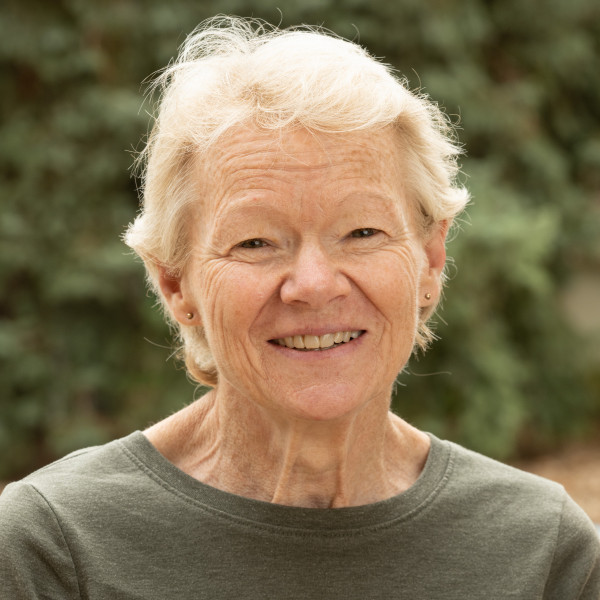Professor and Department Chair
About
Office Hours:
Tuesdays 10:30 a.m. to noon, and by appointmentRole:
FacultyPosition:
- Professor and Department Chair
Concentration:
- health communication, public understanding of science, media effects, quantitative research methods, specialized magazine writing, technical and specialized editing
Department:
- Journalism & Media Communication
Education:
- Ph.D., Mass Communications, University of Wisconsin-Madison
Curriculum Vitae:
Biography
Dr. Long's research interests are in health and science communication. In health communication, she is interested in the use of messages to encourage attitudinal and behavioral change. In recent work, she has studied the use of citizen science approaches to increase awareness, knowledge, and protective behaviors related to poor air quality caused by wildfire smoke and ozone. In science communication, she studies the effects of media portrayals of science and scientists on people's attitudes toward science. Recent work has focused on media influences on adolescents' attitudes toward science careers.
Her research has been published in Science Communication, Tobacco Control, Journal of Studies on Alcohol, Journal of Health Communication, Journal of Communication, Mass Communication and Society, Public Understanding of Science, among others. She has been PI or co-PI on grants from the National Institutes of Health, National Science Foundation, Colorado Tobacco Research Program, among others. Her professional experience includes being a technical writer/editor in aerospace and engineering, and a writer in the public affairs office for a hospital and clinics.
Dr. Long is a professor in the Colorado School of Public Health; a member of CSU's Partnership for Air Quality, Climate, and Health; and a Fellow in the American Association for the Advancement of Science.
Publications
Select Publications:
Wendt, E. A., Quinn, C., L’Orange, C., Miller-Lionberg, D. D., Ford, B., Pierce, J. R., Mehaffy, J., Cheeseman, M., Jathar, S. H., Hagan, D. H., Rosen, Z., Long, M., & Volckens, J. (2021). A low-cost monitor for simultaneous measurement of fine particulate matter and aerosol optical depth – Part 3: Automation and design improvements. Atmospheric Measurement Techniques, 14, 6023-6038.
Anderson, A. A., Williams, E. A., Long, M., Carter, E., & Volckens, J. (2020). Organizationally based citizen science: Considerations for implementation. Journal of Science Communication, 19(3), A01.
Moore, A. C., Anderson, A. A., Long, M., McKernan, L. T., & Volckens, J. (2019). The power of the crowd: Prospects and pitfalls for citizen science in occupational health. Journal of Occupational & Environmental Hygiene, 16(3), 191-198.
Ford, B., Pierce, J. R., Wendt, E., Long, M., Jathar, S., Mehaffy, J., Tryner, J., Quinn, C., van Zyl, L., L'Orange, C., Miller-Lionberg, D., & Volckens, J. (2019). A low-cost monitor for measurement of fine particulate matter and aerosol optical depth – Part 2: Citizen-science pilot campaign in northern Colorado. Atmospheric Measurement Techniques, 12, 6385–6399.
Rouner, D., Long, M., Bubar, R., Vernon, I., & Aungie, B. (2015). Communication about sexually transmitted infections among rural and urban Native American youth. The Howard Journal of Communications, 26(2), 172-192.
Bubar, R., Rouner, D., Vernon, I. S., Long, M., & Aungie, B. (2015). Rap about clap: A qualitative study of American Indian youth and STDs/STIs. American Indian Culture and Research, 39(2), 53-67.
Boiarsky, G., Rouner, D., & Long, M. (2013). Effects of responsibility attribution and message source on young adults health attitudes and behaviors. Journal of Health Communication, 18(7):881-894.
Steinke, J., Applegate, B., Lapinski, M., Ryan,L., & Long, M. (2012). Gender differences in adolescents wishful identification with scientist characters on television. Science Communication, 34(2):163-199.
Long, M., Steinke, J., Applegate, B., Knight Lapinski, M., Johnson, M. J., & Ghosh, S. (2010). Portrayals of male and female scientists in televised programs popular among middle school-age children. Science Communication, 32:356-382.
Slater, M. D., Long, M., Bettinghaus, E. P., & Reineke, J. B. (2008). News coverage of cancer in the U.S.: A national sample of newspapers, television and magazines. Journal of Health Communication, 13:523-537.
Long, M., Slater, M. D., & Lysengen, L. (2006). U.S. media coverage of tobacco-control issues. Tobacco Control, 15:367-372.
Slater, M. D., Long, M., & Ford, V. (2006). Alcohol and illegal drugs, violent crime, and accidents in U.S. local and national news. Journal of Studies on Alcohol, 67:904-910.
Slater, M. D., Rouner, D., & Long, M. (2006). Television dramas and support for controversial public policies: Effects and mechanisms. Journal of Communication, 56(2):235-252.
Long, M., Slater, M. D., Boiarsky, G., Stapel, L., & Keefe, T. (2005). Obtaining a nationally representative sample of local news media outlets. Mass Communication and Society, 8:299-322.
Long, M., Boiarsky, G., & Thayer, G. (2001). Gender and racial counter-stereotypes in science education television: A content analysis. Public Understanding of Science, 10:255-269.
Long, M. (1995). Scientific explanation in U.S. newspaper science stories. Public Understanding of Science, 4(2), 119-130.
